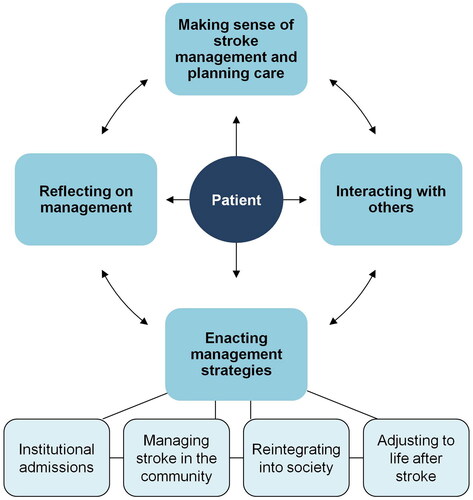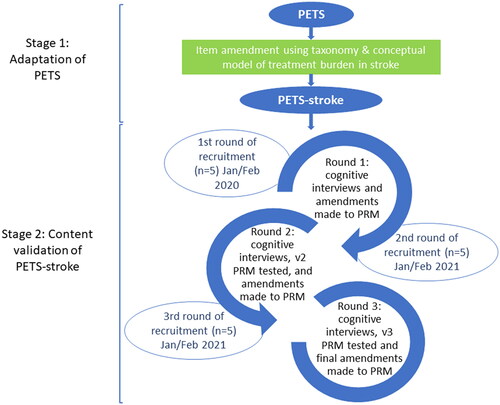Figures & data
Figure 1. Conceptual model of stroke treatment burden.

Figure 2. Stages of content validation.

Table 1. Domains included in PETS and PETS-stroke.
Table 2. Self-reported participant characteristics.
Table 3. Status of 34 PETS-stroke items post-content validation.
Table 4. Items included in PETS-stroke following item adaptation and finalised items following cognitive interviews.
Supplemental Material
Download Zip (53.2 KB)Data availability statement
Access to anonymised data can be discussed by contacting the authors. The Patient Experience with Treatment and Self-management (PETS), including all versions, is protected by copyright to the Mayo Foundation for Medical Education and Research, © 2016, 2020, all rights reserved. The PETS (general measure) and its scoring are available by contacting Dr Kathleen Yost ([email protected]).
